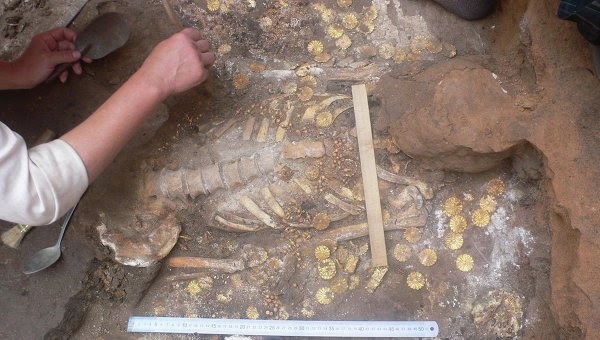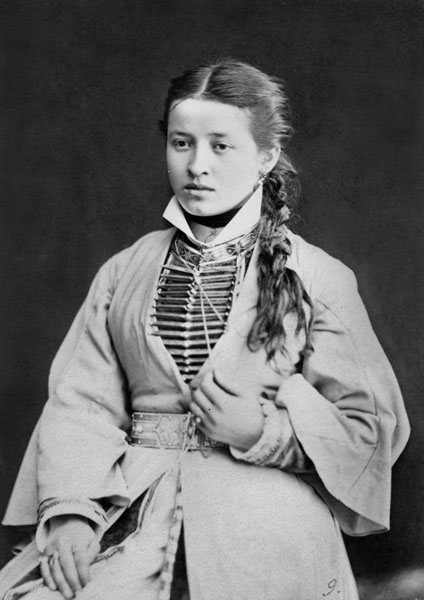The report below originally appeared on the Archaeology News Network (see link or in pdf “Archaeologists Discover Ancient Treasures at Russian Burial Site“) on August 6, 2013. Kindly note that:
- The author of the Archaeology News Network cites the Scythians as “Persian-speaking” when in fact they spoke Northern Iranian languages (or more broadly, Iranian languages).
- The second and third pictures (and accompanying captions) inserted into the article are by Kaveh Farrokh.
=========================================
Archaeologists have found the intact burial chamber of a noble woman from a powerful tribe that roamed the Eurasian steppes 2,500 years ago in southern Russia, an official said Tuesday.
 The woman’s skeleton covered with jewelry and decorations (Picture Source: State Teachers Training University of Bashkortostan)
The woman’s skeleton covered with jewelry and decorations (Picture Source: State Teachers Training University of Bashkortostan)
The Sarmatians were a group of Persian-speaking tribes that controlled what is now parts of southern Russia, Ukraine and Central Asia from around 500 BC until 400 AD. They were often mentioned by ancient Greek historians and left luxurious tombs with exquisite golden and bronze artifacts that were often looted by gravediggers.
But the burial site found near the the village of Filippovka in the Orenburg region has not been robbed – and contained a giant bronze kettle, jewelry, a silver mirror and what appears to be containers for cosmetics, said history professor Gulnara Obydennova who heads the Institute of History and Legal Education in the city of Ufa. Professor Obydennova told RIA Novosti: “The find is really sensational also because the burial vault was intact – the objects and jewelry in it were found the way they had been placed by the ancient nomads…” The vault – located 4 meters (13 feet) underground – was found in the “Tsar Tumulus,” a group of two dozen mounds where hundreds of golden and silver figurines of deer, griffins and camels, vessels and weapons have been found since the 1980s. The woman’s skeleton was still covered with jewelry and decorations, and her left hand held a silver mirror with an ornamented golden handle, Obydennova said.
 [Click to Enlarge] Photograph of an Ossetian girl in 1883. The Iranian-speaking Ossetians are the modern-day descendants of the great Sarmatian tribes who once held their mighty sway over Eastern Europe.
[Click to Enlarge] Photograph of an Ossetian girl in 1883. The Iranian-speaking Ossetians are the modern-day descendants of the great Sarmatian tribes who once held their mighty sway over Eastern Europe.



